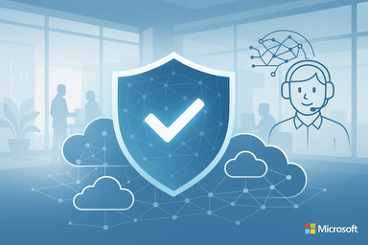Is your security team stuck in an endless cycle of scanning, patching, and praying? In today’s sprawling cloud world, that old reactive approach just doesn’t cut it. You’re burning out your team and, frankly, not getting much safer.
It’s time to change the game. The real win isn’t just patching vulnerabilities; it’s about smartly reducing your actual business risk. Ready to level up? Here are 10 vulnerability remediation best practices to build a truly resilient security posture.
Vulnerability Remediation Best Practices for the Modern Enterprise
1. Establish a Continuous Vulnerability Management Lifecycle
Ditch the once-a-quarter scan-and-scramble. Security isn’t a one-time event; it’s a nonstop loop. Think of it as a fitness tracker for your security health: constantly discovering, assessing, prioritizing, fixing, and then checking your work. This constant vigilance slams the door on attackers looking for an easy way in.
2. Achieve Complete Attack Surface Visibility
Let’s be honest: you can’t protect what you can’t see. Those forgotten servers and shadow IT projects? That’s where breaches are born. You need a complete, real-time map of everything: every server, container, API, and laptop across all your clouds and data centers. Without it, you’re flying blind.
3. Adopt a Risk-Based Prioritization Model Beyond CVSS
If everything is “critical,” then nothing is. Chasing every high CVSS score is a surefire way to exhaust your team while ignoring the threats that actually matter. It’s time to get smarter. Prioritize based on real risk: Is it being actively exploited in the wild? Is it on a “crown jewel” asset? Can an attacker actually reach it? Focus on the vulnerabilities that keep your CEO up at night, not just the ones with a scary-looking score.
4. Integrate Identity and Access Management (IAM) as a Primary Control
Forget the old castle-and-moat security model. Today, your identity system is the perimeter. Since most attacks start with stolen credentials, your Identity and Access Management (IAM) is one of your most powerful weapons. Lock it down with “Just-in-Time” (JIT) access—no more permanent admin rights!—and make access decisions based on device health. A vulnerable laptop shouldn’t be able to touch your sensitive data, period.
5. Automate Remediation and Response
You can’t win a race against machines with manual processes. Attackers use automation, and you need to fight fire with fire. We’re talking about more than just auto-patching. Think SOAR (Security Orchestration, Automation, and Response) playbooks that can automatically isolate a compromised machine, block a user, and open a ticket before your analyst has even finished their coffee.
6. Embed Security into the DevOps Lifecycle (DevSecOps)
Why clean up a mess when you can prevent it from happening? That’s the magic of “shifting left” with DevSecOps. Instead of finding flaws at the last minute, build security checks directly into your development pipeline. Scan code, containers, and infrastructure templates before they’re deployed. Your developers will thank you, and your production environment will be much safer.
7. Develop and Enforce Robust Remediation Policies and SLAs
Hope is not a strategy. To get serious about remediation, you need to put it in writing. Formal policies and Service Level Agreements (SLAs) create clarity and accountability. Everyone knows their role, and there are clear deadlines for fixing things based on risk. No more pointing fingers or letting critical vulnerabilities linger for months.
8. Implement Data-Centric Security
Let’s focus on the prize: your data. At the end of the day, that’s what attackers are after. So, why not build your security strategy around it? Find out where your most sensitive data—your “crown jewels”—lives, and then prioritize protecting the attack paths that lead directly to it. A vulnerability threatening your public-facing blog is one thing; a vulnerability that gives access to your customer database is a five-alarm fire.
9. Measure and Monitor with Actionable Metrics
Are you actually getting better, or just staying busy? If you’re not tracking the right metrics, you’ll never know. Ditch the vanity metrics (like “number of patches applied”) and focus on what really shows progress: How fast are you fixing critical issues (MTTR)? Is your backlog shrinking? Are you meeting your SLAs? Good data tells a story and helps you prove your program’s value to the board.
10. Foster a Security-First Culture Through Effective Reporting
The best tools in the world can’t fix a culture that doesn’t care about security. Your final, and most important, job is to make everyone a part of the security team. How? By communicating effectively. Translate technical jargon into business impact. Show the board a dashboard that illustrates risk reduction, not a spreadsheet of CVEs. When you make security everyone’s business, you build a truly resilient organization.
Head
Moving from a reactive patch-and-pray model to a proactive, risk-based program is a game-changer. It’s about working smarter, not just harder. By embracing these ten practices, you’ll stop chasing alerts and start neutralizing real threats, transforming your security team from a cost center into a strategic powerhouse that protects the business and enables it to thrive.

;)



